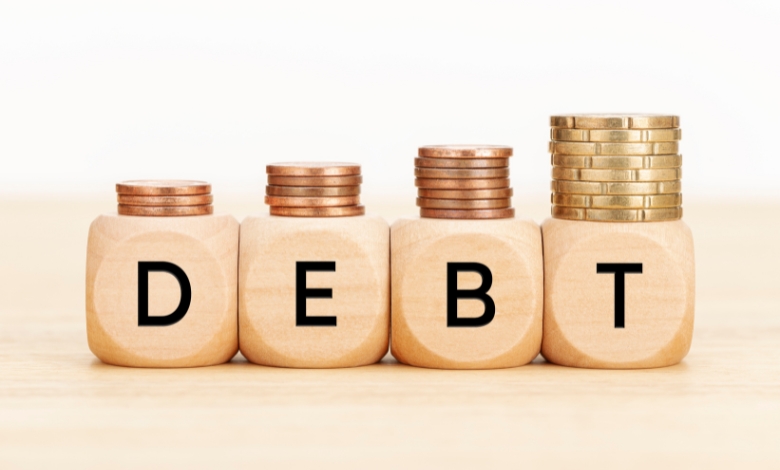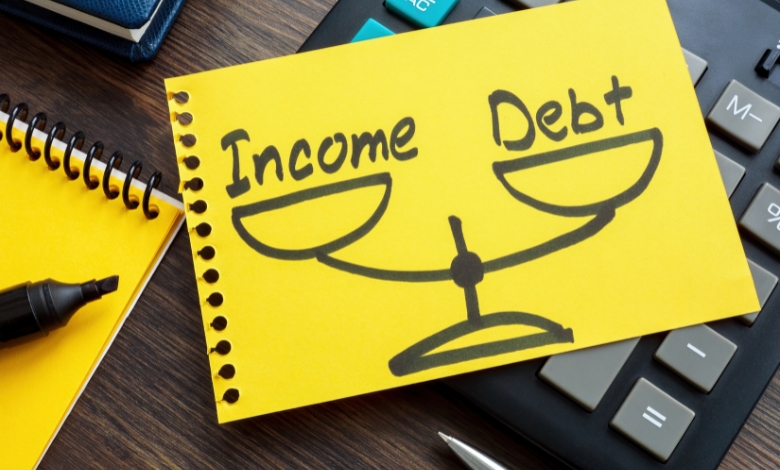Is business debt good or bad? Find the pros and cons of business debt with our guide on 6 tough decisions to consider.
I was excited and nervous at first while considering borrowing money for my company.
Having extra money for marketing, new tools, or expansion sounds fantastic on one side.
It appeared like it may provide my company the boost it required to flourish.
But then the concept of debt also made one uneasy. Stories of companies falling due to heavy debt have come from all around.
“Is this really the right choice for my business?” I asked myself constantly.
I came to see at last that it’s all about juggling opportunity and danger. Debt depends on your management and use; it is neither beneficial or bad by itself.
With every road presenting possibilities as well as difficulties, it seemed like I was at a crossroads.
These difficult choices spurred me to investigate the advantages and drawbacks of corporate debt more thoroughly.
I discovered there are six main factors to consider.
Should you also be considering this action, let’s go over these ideas together in this blog post.
Let’s dive in.
Article Breakdown
What is a Business Debt?

Business debt is the financial commitments a firm bears during its running operations. Loans from financial institutions, credit lines, trade credit from suppliers, and other types of borrowing are only a few of the several sources from which these responsibilities can arise.
Funding development, controlling cash flow, and making investments in fresh opportunities all depend on business debts. They do, however, carry the obligation of repayment—often with interest—and demand careful management to guarantee they do not compromise the company’s financial health.
Short-term and long-term debt are among the several forms of corporate debt.
- Short-term debt typically includes obligations that are due within a year, like accounts payable and short-term loans.
- Long-term debt, on the other hand, extends beyond one year and may include mortgages, bonds, and long-term loans.
Effective management of business debt requires knowledge of the terms and circumstances of every debt instrument, monitoring of loan schedules, and preservation of a reasonable balance between debt and equity.
Many times, businesses employ different approaches to control debt so they may satisfy their liabilities, including:
- Refinancing
- Negotiating better terms with creditors
- Using cash flow projections
Although debt can be a great tool for corporate development and expansion, it has to be controlled carefully to prevent financial crises and guarantee the long-term survival of the organization.
Good Debt vs. Bad Debt
Though not all debt is created equal, debt is sometimes considered as a bad feature of personal finance. Making wise financial decisions and guarantees long-term financial health depends on an awareness of the differences between good and bad debt.
Designed especially to help companies grow and thrive, a Small Business Administration (SBA) loan is an example of good debt; usually with favorable conditions and low-interest rates.
The official SBA website is a great source of further SBA loan information.
Good Debt
Considered as an investment in your future, good debt could raise your net worth or create future income. Good debt can include:
- Student Loans: Student loans are a smart investment since they usually result in improved job possibilities and higher earning potential.
- Mortgages: Purchasing a house with a mortgage can be a wise financial decision since homeownership may offer tax advantages and real estate can appreciate over time.
- Company Loans: Starting or growing a company with a loan can result in more income and long-term success should the company flourish.
Usually with lower interest rates, good debt provides returns that offset the borrowing expenses. The secret is making sure the debt acquired results in more financial stability and expansion.
Bad Debt
Using a high-interest credit card to cover regular running costs like utilities or office supplies without a strategy for quick payback is an instance of bad debt. Because of high interest rates, this kind of borrowing can rapidly spiral out of control and cause major financial pressure as well as limit the money accessible for important corporate purchases.
Conversely, bad debt is borrowing money to buy depreciating assets or goods devoid of long-term financial gain. Among bad debt are:
- Credit Card Debt: High-interest credit card debt from non-essential purchases can rapidly overwhelm and complicate pay-off efforts.
- Auto Loans: Although a car could be required, generally speaking, autos lose value over time, thus borrowing a loan to purchase a new car could result in paying more than the car is worth.
- Payday Loans: Often used to fulfill immediate needs, payday loans—short-term, high-interest loans—can trap debtors in a cycle of debt because of outrageous fees and interest rates.
Usually featuring high interest rates, bad debt does not help your general financial situation. It can make you less able to save and invest for the future and cause financial stress.
This resource offers a detailed discussion of the dangers connected to high-interest credit card debt.
Making Smart Choices
Every possible debt should be thoroughly considered and judgments taken in line with your long-term financial objectives.
These are some important factors to keep in mind while deciding on company debt:
- Analyze the intention: Find out if the debt is for an unneeded expense or if it will enable you to reach long-term financial goals.
- Check the interest rate: To cut the borrowing costs, compare the interest rates of several borrowing possibilities and select the one with the lowest rate.
- Establish a repayment schedule: Make sure your schedule for timely debt repayment is clear to prevent paying too much interest.
Making strategic financial decisions and separating good from bad debt will help you to use debt to your advantage and steer clear of the dangers of too heavy borrowing.
1) Should you take on high-interest loans for immediate expansion?

Approaching high-interest loans can be a double-edged sword. Consider a tiny coffee business trying to open a second site. A high-interest loan could give the owner the quick money required to take advantage of a desirable site.
The huge interest payments, however, could tax the company’s financial flow. Should the new site fail to create anticipated income, the company may find it difficult to pay back loans, therefore causing a possible financial crisis.
One should evaluate possible income against loan cost and take into account other sources of finance.
2) Is it wise to use personal assets as collateral for business debt?

One runs into danger when using personal assets as collateral. Imagine an entrepreneur seeking a loan to grow a software company using their house as collateral. Should the company fail, the entrepreneur runs not only a danger of losing their company but also their house.
This indicates a great dedication to the company and could result in improved loan terms, but it also means that the success of the company determines personal financial security directly.
Examining whether the company might get a loan without using personal assets helps one to balance the possible advantages against the hazards.
3) Should you prioritize paying off debt or reinvesting in the business?

The financial situation of the company now and the prospects for expansion will determine this choice. Imagine a retail store deciding whether to pay down a $50,000 debt or use that money to start a new product line.
Should the new product line show strong market demand and good returns, reinvesting might result in more long-term benefits. On the other hand, paying down the debt could be the safer option to guarantee the company stays stable if the loan is highly sought for and cash flow is limited.
Key is to compare the possible return on investment with the debt expense.
4) Is it better to seek venture capital or traditional bank loans?

Factors like control and repayment terms determine whether venture capital or conventional bank loans are best.
A biotech business might, for instance, look for venture capital to take advantage of not only the money but also the sector knowledge and network VCs offer. This frequently entails, though, forfeiting some influence over corporate choices and equity.
Conversely, a family-owned restaurant would choose a bank loan to keep complete ownership even if it would imply consistent interest-based repayments.
Companies should take into account their stage of development, required finance level, and degree of ownership sharing readiness.
5) How much debt is too much for your business to handle?

Establishing reasonable debt levels depends on industry standards, cash flow, and revenue of the company. For example, compared to a seasonal firm like a holiday decorations store, a manufacturing company with consistent contracts and predictable income may manage higher debt levels.
Assuming a debt-to-equity ratio of 1:1, a corporation with $500,000 in annual income could find it excessive to be taking on $1 million in debt.
Monitoring debt ratios helps one to make sure the company can comfortably satisfy its liabilities without compromising operations.
6) Should you consolidate existing debts or keep them separate?

Consolidation of debt can help to simplify payments and perhaps lower interest rates. For instance, a digital marketing company having several modest loans at different rates can combine them into one loan with a reduced total rate. This lessens administrative load and may save interest costs.
If the new merged loan has a longer term, though, it could entail paying more interest over time. On the other hand, if some loans have favorable terms or early repayment penalties, separating debt could help.
Before doing anything, one must first consider administrative ease and overall cost.
Wrapping It Up
In this article, I discussed the key points about good debt and bad debt , shared my insights and experiences, and highlighted the main takeaways. Overall, I hope you found the information helpful and informative.
FAQs
1) What are some common types of business debt?
Typical forms of commercial debt are credit card debt, lines of credit, bank loans, and equipment finance.
2) Can businesses declare bankruptcy to get out of debt?
Yes, companies who find themselves unable to pay back their debts might seek bankruptcy. Still, this should be a last resort since it can affect the company and its owners long-term.
3) Is it better to take on debt or seek investors?
This relies on the particular situation every company faces.
Although it comes with regular payback and interest, taking on debt means keeping complete ownership and control.
Seeking investors results in some ownership and control loss but also in knowledge and growth potential.
Before deciding on anything, one should give much thought to both advantages and drawbacks of every alternative.
4) Can businesses negotiate better terms on loans or debts?
Yes, companies can bargain better terms on debt or loans. Negotiating reduced interest rates, longer loan terms, or even debt forgiveness might all fall under this category.
Negotiations, however, will rely on lender policies and company financial status. Businesses should be ready to argue why they should have better terms and have a solid awareness of their financial situation.
Disclaimer: The information provided in this article is for general informational purposes only and should not be construed as professional financial advice. Please consult with a financial advisor or professional before making any major financial decisions for your business.



